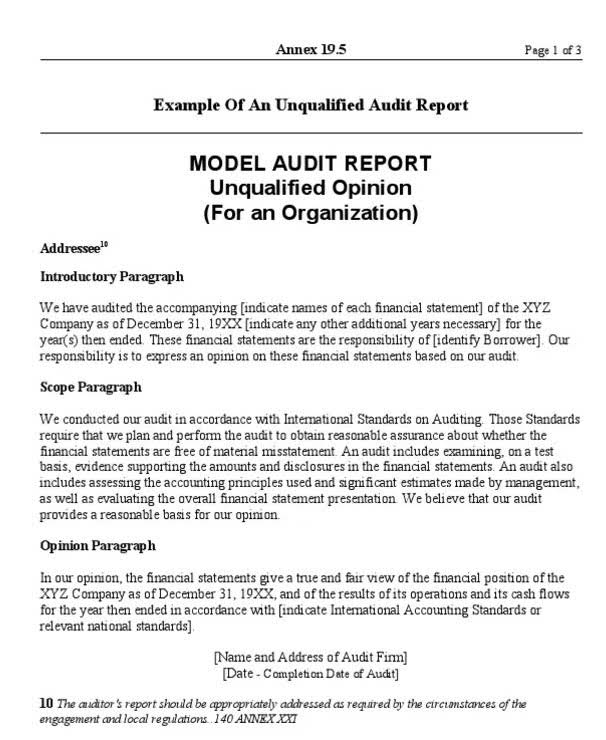
A statement of shareholders’ equity is a valuable tool for gauging a business’s health for the following reasons. The following calculation example shows how stockholders’ equity can change from the beginning to the end of an accounting period. When looking at Apple’s Statement of Shareholders’ Equity, we can see that although the shareholders’ equity is positive (i.e. more assets than liabilities) it has negative retained earnings, which is a little unusual. Further analysis of this statement will help discover that Apple has a large (and planned) share buyback program underway.
Statement of Owner’s Equity

This allows stakeholders to understand how equity has been affected by different transactions and events, including net income or loss, dividends, capital contributions, share issuances, and revaluations. It provides crucial information regarding the sources and uses of equity and helps stakeholders understand how the company’s equity position has evolved during the reporting period. The ultimate aim of the statement remains to provide a brief movement for all the equity accounts within a specific period. Investors may also evaluate the tax implications reflected in the Statement of Changes in Equity. The management of these deferred tax items can reveal a company’s efficiency in tax planning and its potential future profitability. The Statement of Changes in Equity serves as a bridge, connecting various aspects of a company’s financial performance and position.
Accumulated Other Comprehensive Income (Loss)

Movement or changes in the capital structure and value is captured in the Stockholders’ equity statement. Typically, companies prepare the statement of stockholders’ equity quarterly and annually, in line with other financial statements. However, the frequency can vary based on regulatory requirements and the company’s internal policies. It helps users of financial statements, such as investors, analysts, and creditors, understand the reasons behind fluctuations in equity and evaluate the impact of different transactions on the company’s financial position. Share issuance increases shareholders’ equity by adding new capital contributed by investors. It is reflected as an increase in share capital and possibly additional paid-in capital, depending on whether shares are issued at par or above par value.
Support reconciliation between financial statements:
- It is also known as the statement of shareholders’ equity, the statement of equity or the statement of changes in equity.
- This is also known as minority interests and is the share of ownership in a subsidiary’s equity that is not owned or controlled by the parent company.
- It provides crucial information regarding the sources and uses of equity and helps stakeholders understand how the company’s equity position has evolved during the reporting period.
- Those are typically the only transactions that will affect the equity accounts and thus be reported on this financial statement.
- If you’re a CPA, accountant, or any other financial or tax professional guiding clients through these shifts, you probably…
- In terms of payment and liquidation order, bondholders are ahead of preferred shareholders, who in turn are ahead of common shareholders.
Jason Pack, chief revenue officer at Freedom Debt Relief, explained that most are usually broken down by type of equity, like common stock and retained earnings. Positive shareholder equity indicates that a company’s assets exceed its liabilities, which is generally a sign of good financial health at a company. Negative shareholder equity, on the other hand, means that a company’s liabilities exceed its assets, statement of changes in stockholders equity example which can be a red flag for investors and may indicate financial distress. Common stock represents the ownership of a company and can be in various classes, such as A and B.

A statement of changes in equity shows the difference in a company’s equity over a period, usually a year. Fiscal 2018 includes 53 weeksSee accompanying notes to consolidated financial statements. The resulting figure ($155,000) represents the shareholders’ equity or the ownership interest of stockholders in the corporation. This equation is necessary to use to find the Profit Before Tax to use in the Cash Flow Statement under Operating Activities when using the indirect method. This is used whenever a comprehensive income statement is not given but only the balance sheet is given.
- By analyzing the statement’s net income or loss portion, stakeholders can assess the company’s financial performance and profitability trends.
- The Statement of Changes in Equity does not exist in isolation; it is intricately linked with other financial statements, providing a cohesive understanding of a company’s financial health.
- The management of these deferred tax items can reveal a company’s efficiency in tax planning and its potential future profitability.
- Understanding this statement is essential for evaluating a company’s financial health and performance.
- Gregor outlined how to gauge business success when reviewing a statement of shareholders’ equity.
- If a company is undertaking a large, planned share buyback program, for example, the spending on this (for the period) will be reported in the statement of shareholders’ equity.
The subject of additional share capital throughout the period can be supplemented in the statement of change in https://staging.miztechnologies.com/what-are-other-long-term-liabilities-types-and/ equity while restoration of shares can be subtracted therefrom. The statement of change in equity displays a connection between the income statement and the balance sheet of the business. Understanding this statement is vital for anyone with a vested interest in a company’s financial health, from investors to analysts. It provides insights into corporate strategies such as dividend policies, share buyback programs, and equity financing, which can influence investment decisions and market perceptions.

Conversely, if the company bought back shares (treasury stock), it would decrease equity. For example, if a company is showing strong growth in the statement of stockholders’ equity, then that shows that they are investing in new projects and increasing their shareholder’s equity. The layout of a statement of changes in equity for a company for annual reporting purposes is legally defined. If the company sustained net losses over several years and retained earnings were insufficient to absorb these losses, retained earnings would have a debit balance and would be reported on the SFP as a deficit.

How to Calculate Stockholders’ Equity
Businesses of all sizes use the statement of shareholders’ equity (or owners’ equity if the business isn’t public). Gregor explained that while it’s a necessity for all businesses, how it’s used may differ gym bookkeeping across business types and sizes. We’ll explain more about the statement of shareholders’ equity and how it fits into your business’s overall financial picture. Stockholders’ equity increases due to additional stock investments or additional net income. Retained earnings increases when revenue accounts are closed out into it and decreases when expense accounts and cash dividends are closed out into it. Retained earnings are the total accumulated earnings of a company after it has distributed dividends to its shareholders.


Commentaires récents